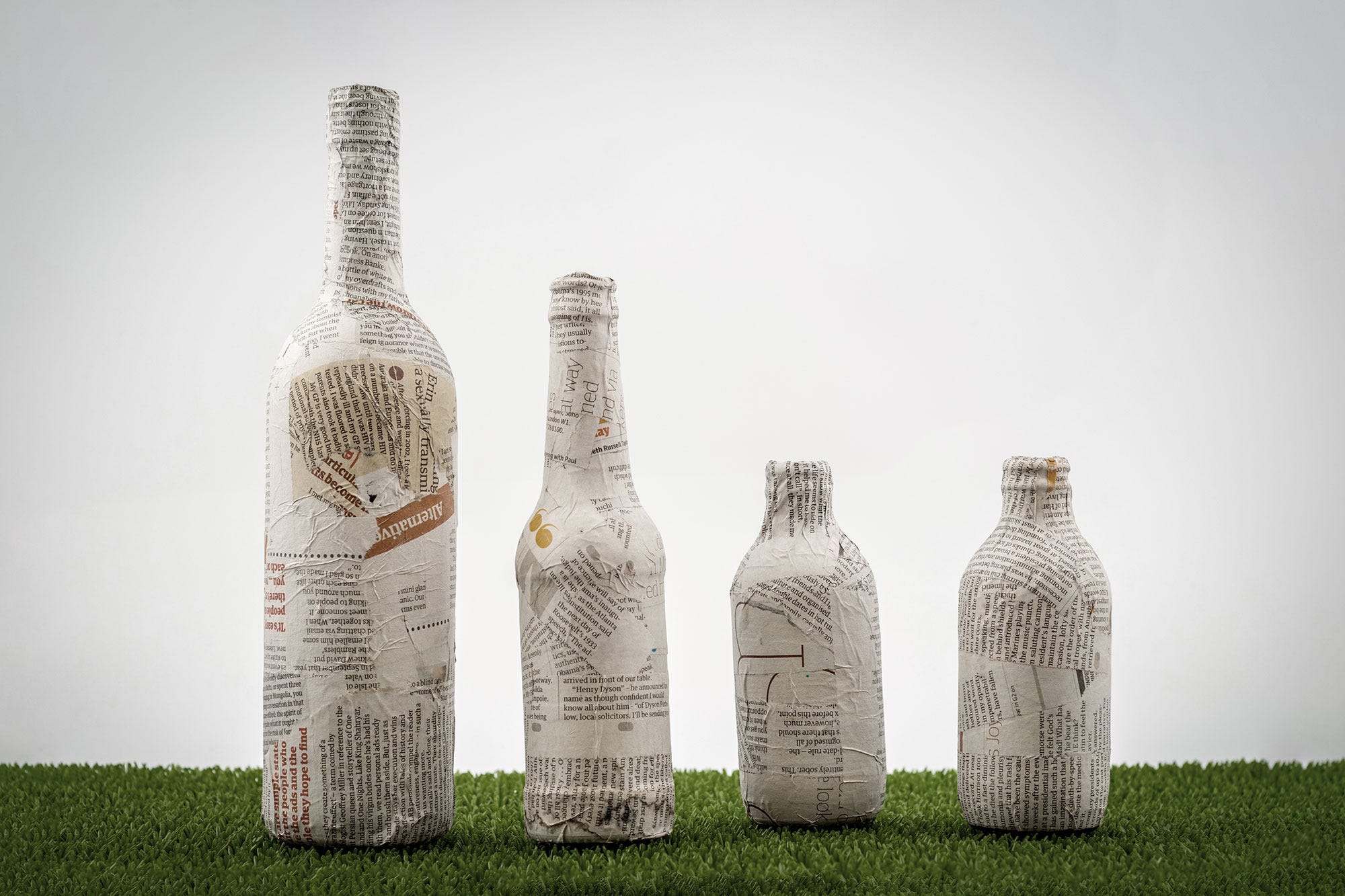Wrapped
They called it papier mache - mulching up sheets in water or wallpaper paste and then covering balloons or other objects.
He guessed that it was Blue Peter that had subliminally put the idea into his head when he was young. Wrapping with newspapers. They called it papier mache - mulching up sheets in water or wallpaper paste and then covering balloons or other objects. It resurfaced with the idea for a series of photographs. He took everyday objects, cans, books, coffee cups and the like and covered them in newspapers. He found, with a lot of objects, he could just use water - spray the object down and a single sheet of newsprint would stick. But when he upgraded to a mister filled with a watered-down PVA - he found his perfect adhesive, which would form a lovely film for the paper to stick to.
He did a whole series of photographs. A series where he painted the object, and even gold-leafed some objects, but nothing was as pure as the newspaper. He liked the fragmented stories, he liked the way it was still, to some extent, a newspaper, but one that didn’t make any logical sense.
Months passed, and he almost forgot about the idea until one evening - damp and windy, he noticed a sheet of newspaper around a bin on the street. It looked wonderful. The next night he left the house armed with three large broadsheet papers and his reloaded and trusted glue mister. That night he covered a small bin, a ‘for-sale’ board and a road sign. The next night, he upgraded to a postbox. He could work fast and with stealth.
The day after he’d go back, during daylight, and photograph his work. He talked to people about it - saying how wonderful he thought it was. People’s reactions were split between those who were angry - feeling this to be vandalism, and those who loved it - assuming it to be some new form of street art.
He became bolder. He covered a telephone box (who used telephone boxes now anyway?) and then a small wooden cloche in an allotment. In a playground, in the park, he covered a Wendy house which gave him the idea to jump fences into people’s back gardens and cover their sheds.
It was one such trip where he came closest to being caught. The light in a kitchen overlooking the garden with the shed he was wrapping flipped on, floodlighting him and his work just as he was halfway through. He was lucky to get away. The guy looking out through his French windows was either groggy with sleep or had forgotten his glasses, as he registered neither the dodgy-looking guy with a bottle full of watered-down glue nor the shed half covered in newspaper print.
After this close encounter, he stayed in public places, where he could run if needed, and this was when his real obsession started. A Mini. Then a small Citroën. Then the bigger cars - the ones he had always hated, flashy BMWs or Audis with their number plates the same as their model number. He cultured a hatred of these people and their hubris, he imagined their faces in the morning, when they saw what he had done, with glee. It turned out these vehicles' sleek lines and curves were perfect for covering, he could do a whole car in less than five minutes.
He rarely got to see his handiwork, however - the cars were driven off to the car wash immediately after they were discovered. He needed to find cars which would stick around. Starting to think big, he imagined a whole car park like the final scene from the film Arachnophobia but covered in newspaper print rather than spiderweb.
Photo, London 2008, Nikon d200
For my non-British readers, ‘Blue Peter’ is a very long-running BBC children’s TV programme where ( if my memory serves me right ) they did a lot of papier mache amongst other crazy stuff. A nice bit of trivia? Singer Sophie Ellis-Bextor was the daughter of one of Blue Peter’s presenters, Janet Ellis.





What a completely inspired way for him to use up the strung bales of hoarded newspapers which filled three downstairs rooms of his house...